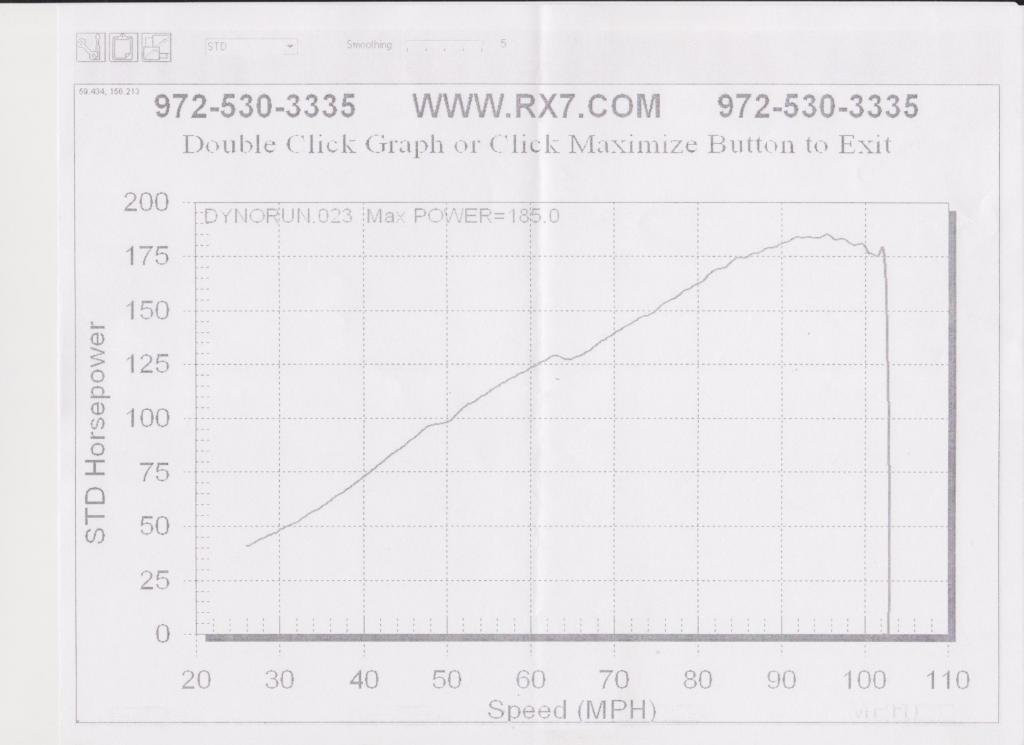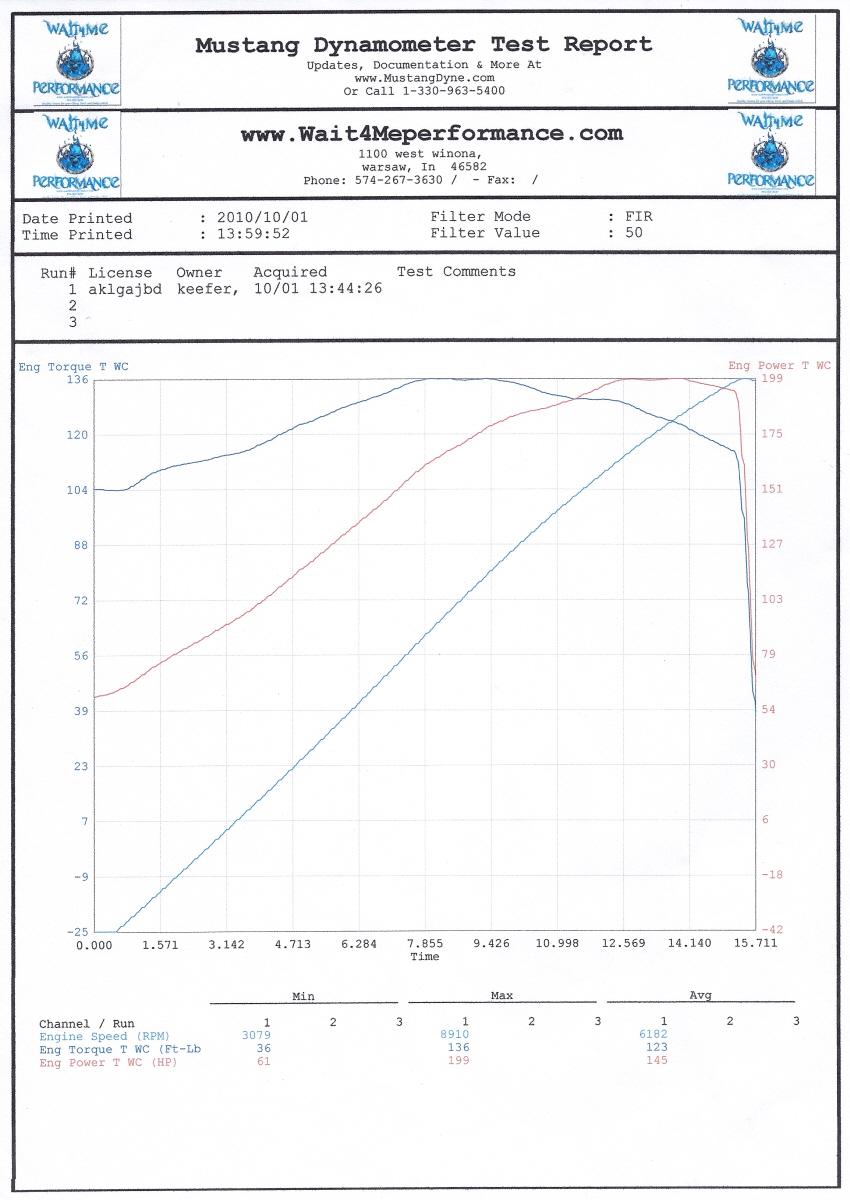Who has the highest horsepower NA 6-port?
#1
Im curious, i haven't found any definitive numbers but im curious who makes the most? Im guessing its around 200-205 but im not sure. So what have u guys done?
#2
i believe it is about 285whp from the renesis with extensive mods...
joking aside, from the early 13B engine probably about 205whp with stock intake manifolds. carbed likely around 250whp with a short runner manifold. semi/PP motors upwards of 350whp(different category but for comparison sake).
4 port blocks seem to respond better to making more power over the 6 ports.
finding dyno sheets of 6 port numbers isn't easy, because the 200whp rule still seems to apply without ditching at least the 6 port restrictive factory intake manifold. even bridged 6 port engines aren't breaking the rules, they seem to fall far short, mainly because you simply can't pull enough air through the factory intake to make much more.
joking aside, from the early 13B engine probably about 205whp with stock intake manifolds. carbed likely around 250whp with a short runner manifold. semi/PP motors upwards of 350whp(different category but for comparison sake).
4 port blocks seem to respond better to making more power over the 6 ports.
finding dyno sheets of 6 port numbers isn't easy, because the 200whp rule still seems to apply without ditching at least the 6 port restrictive factory intake manifold. even bridged 6 port engines aren't breaking the rules, they seem to fall far short, mainly because you simply can't pull enough air through the factory intake to make much more.
Last edited by RotaryEvolution; 03-02-13 at 05:14 PM.
#3
Moderator
iTrader: (3)
Joined: Mar 2001
Posts: 31,196
Likes: 2,825
From: https://www2.mazda.com/en/100th/
since the difference between the Renesis and the Fc is partly that the Renesis intake ports are bigger and open earlier, why not just port the FC like an Rx8?
#4

the whole renesis intake system has larger total volume yet about 6" or more shorter than the FC engine. don't quote me, i'm just picturing differences in my head. the 5/6th port actuators are much more well designed than even these "inserts" you find while the auxiliary ports are approximately 30% larger. the difference being a less dramatic ramp and a corkscrew design.
compare versus the 4 port renesis, which made about 35 horsepower less at the crank(FC engine revisited?). overall the exhaust being the next restriction, the side port exhaust allowing for more total volume over the PP early exhausts and less sharp evacuation cycles giving it better scavenging effects.
Last edited by RotaryEvolution; 03-02-13 at 07:47 PM.
#6
Hmm.. Ok guys, my question really is street ported 6 ports, all other mods are fair game, like RotaryEvolution said its hard to find any dyno sheets of 6 ports, but I'm so curious because I need to know where to shoot (;
#7
likely because most if not all have never broken 200whp on the 6 port block with stock manifolds. bridged 6 port? nope. street port? nope. EMS? nope. full intake and exhaust? nope. the porting is already rather extreme so porting aside from exhaust has marginal benefit.
easiest way to break that number is actually by removing the exhaust diffusers and running a carb or TBI, but you have the side effects of that crude fuel delivery.
removed diffusers, EMS, full intake and exhaust will net you about that 200whp figure but breaking it requires a more sledge hammer approach.
easiest way to break that number is actually by removing the exhaust diffusers and running a carb or TBI, but you have the side effects of that crude fuel delivery.
removed diffusers, EMS, full intake and exhaust will net you about that 200whp figure but breaking it requires a more sledge hammer approach.
Last edited by RotaryEvolution; 03-04-13 at 05:38 PM.
Trending Topics
#8
i keep going back and forth on the exhaust diffuser issue as to just how big a deal they are. so this seems like as good a place as any to throw it out there. in your experiences and/or research, just how much flow (and, of course, translated power) are we talking about - ballpark?
#10
RotaryEvolution is spot on. My old setup was just shy of 200HP. Full street port, exhaust sleeves removed, full intake and exhaust setup, etc... TBH, it was all a waste of money. For the cost of everything, I could have almost done a T2 swap at the time, but you live and learn.
For me, 6 port is daily driver that will drag on for 100~200k miles if taken care of. If you want performance, swap to the 4 port.
For me, 6 port is daily driver that will drag on for 100~200k miles if taken care of. If you want performance, swap to the 4 port.
#11
here is mine (Built by Rotary Evolution)

This is in my ’90 GTUs and terrorizing local tracks (and myself) from time to time.
Let’s see if I can remember everything:
Apexi’ intake and cold air box
6-port streetport by K. Landers
Atkins aux ports inserts
3rd gen housings
Atkins 2mm seals
Stock balance (assembly not balanced)
Removed ac, ps, mech fan
Stock air pump actuating aux ports
Removed exhaust diffusers
Port matched, ceramic coated RB uncollected header to uncollected RB exhaust: individual pre-silencer and muffler for each rotor.
Stock intake manifolds including both sets of throttle plates
Stock injectors
Stock ECU
T2 fuel pump
SAFC for fuel control
10W30 dino oil (supposedly this is worth 1-2 HP over 20W50)
Stock spark plugs
CDI ignition (Mallory HyFire)
Conservatively tuned by Chris Ott @ Rotary Performance to about 12.5:1 AFR under WOT, 185whp. It made 190whp before the tune running about 13.5:1.
Other ‘low hanging fruit’ which may be able to break the 200hp number:
Extrude-hone intake
Remove 2nd throttle plates
Port match gaskets etc
Rtek or other ECU for tighter fuel and spark curve control; though Chris thinks this will not yield much.
This is a stout n/a: more power than a stock T2, very decent torque, traction-limited in 1st, very spunky car especially with the 4.3 rear end. Mileage is still decent: mid 20’s on road trips, high teens around town on 87 octane.
It is faster in a straight line and all around more capable than a new BRZ. This was my goal.
Good luck

This is in my ’90 GTUs and terrorizing local tracks (and myself) from time to time.
Let’s see if I can remember everything:
Apexi’ intake and cold air box
6-port streetport by K. Landers
Atkins aux ports inserts
3rd gen housings
Atkins 2mm seals
Stock balance (assembly not balanced)
Removed ac, ps, mech fan
Stock air pump actuating aux ports
Removed exhaust diffusers
Port matched, ceramic coated RB uncollected header to uncollected RB exhaust: individual pre-silencer and muffler for each rotor.
Stock intake manifolds including both sets of throttle plates
Stock injectors
Stock ECU
T2 fuel pump
SAFC for fuel control
10W30 dino oil (supposedly this is worth 1-2 HP over 20W50)
Stock spark plugs
CDI ignition (Mallory HyFire)
Conservatively tuned by Chris Ott @ Rotary Performance to about 12.5:1 AFR under WOT, 185whp. It made 190whp before the tune running about 13.5:1.
Other ‘low hanging fruit’ which may be able to break the 200hp number:
Extrude-hone intake
Remove 2nd throttle plates
Port match gaskets etc
Rtek or other ECU for tighter fuel and spark curve control; though Chris thinks this will not yield much.
This is a stout n/a: more power than a stock T2, very decent torque, traction-limited in 1st, very spunky car especially with the 4.3 rear end. Mileage is still decent: mid 20’s on road trips, high teens around town on 87 octane.
It is faster in a straight line and all around more capable than a new BRZ. This was my goal.
Good luck
#12
ouch! so that basically neutralizes the gains you'd expect from the average streetport? that's pretty significant ... and it also explains a lot about some of the ported 6-port results that i've seen reported.
needless to say, i'm off the fence now.
thanks, RE.
needless to say, i'm off the fence now.
thanks, RE.
#13
porting the 6 port motor yields basically almost nothing without removing the diffuser wings in the exhaust. even with them removed the difference is probably a max of about 3% peak power(closer to the 15% figure at the top end i mentioned earlier), the ports don't flow well and are already enlarged about as much as you should go. clean up work is about the best thing you can do, smoothing out the airflow.
4 port n/a blocks generally respond better to street and bridge porting.
4 port n/a blocks generally respond better to street and bridge porting.
Last edited by RotaryEvolution; 03-05-13 at 01:59 PM.
#14
Joined: Jan 2008
Posts: 4,834
Likes: 318
From: Indiana
Customer's ITS Car, Banzai Racing S5 engine, no porting, stock intake manifold, full exhaust, Power FC, 199whp. Multiple time Regional Champion with numerous course records


Last edited by Banzai-Racing; 03-09-13 at 08:02 AM.
#15
I am envious of the graph Banzai Racing posted. Definitely highlights the benefit of a professionally built motor.
Here is mine for a stock S5 with VDI and 5th & 6th ports wired open, cone intake, Racing Beat race header collected to a single muffler and exit out back, and Haltech E8. Motor is a garage build in 2005. Tracked ~12 per year, some race some track day.
jason
Here is mine for a stock S5 with VDI and 5th & 6th ports wired open, cone intake, Racing Beat race header collected to a single muffler and exit out back, and Haltech E8. Motor is a garage build in 2005. Tracked ~12 per year, some race some track day.
jason
#18
all the off the shelf exhausts are hardly a step up from stock. like RB for example i have seen many custom basic setups outperform it without any effort, they are basically untuned aftermarket replacements.
#22
#24
sorry, i didn't see the whp behind it. i just notice some big differences in some of the hp numbers thats why i asked. very impressive though! and i must say i'm kinda jealous.
Last edited by RacerX125; 03-13-13 at 10:28 PM.


